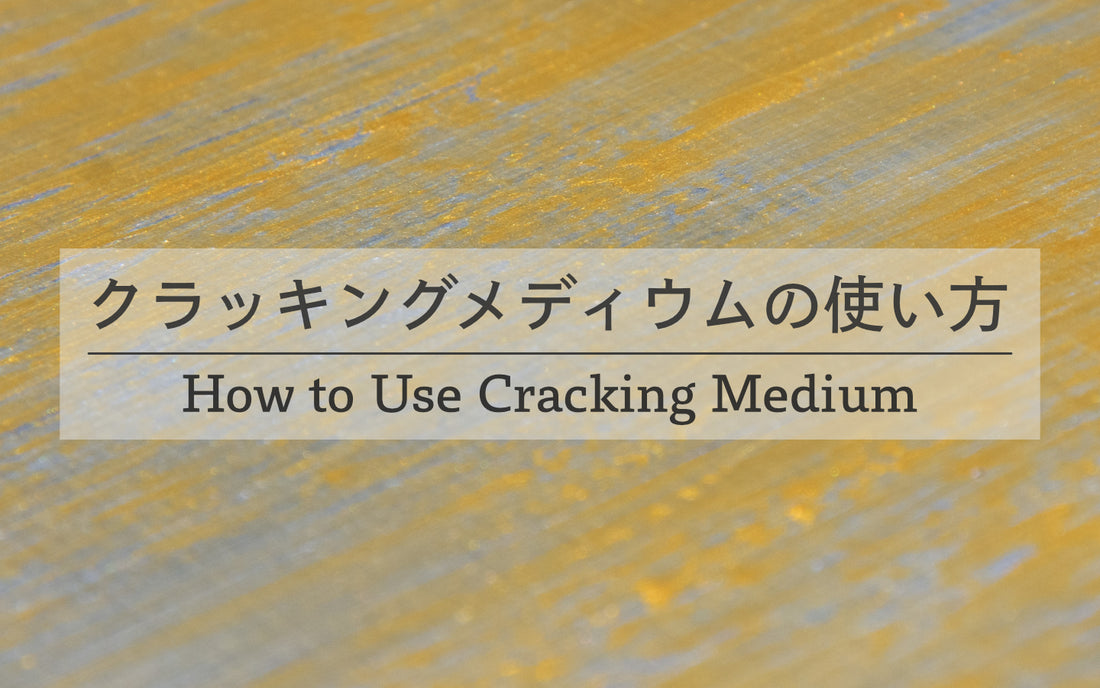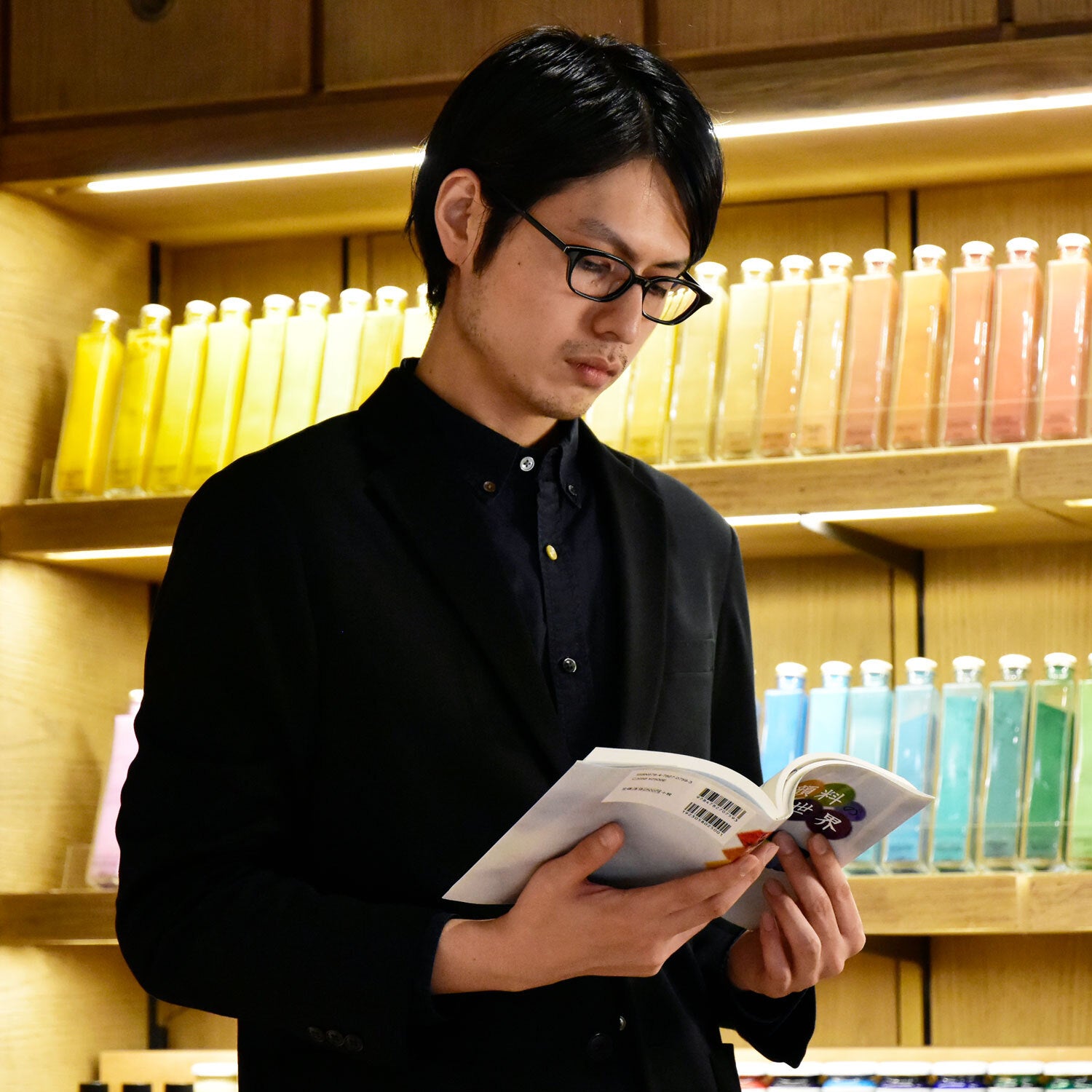Peeling, cracking, and color fading of aged artworks symbolizes the passage of time and people’s activities. However, we personally would like to avoid such aging since PIGMENT TOKYO is a place offering high-quality painting materials made in Japan and other countries.
The Mona Lisa, a masterpiece by Leonardo da Vinci, has fine spider-web cracks on its backside, and is called craquelure in art terminology. This craquelure appears gradually as painting ages over time and is difficult to make intentionally, therefore, it has an important role for validating the authenticity of paintings.
Although cracks can occur for a variety of reasons related to base materials, gesso, mediums, and storage environment, one of the common reasons is the difference in drying speed between the surface paint and the under coat.
At the same time, it is no exaggeration to say that appreciating the beauty that occurs over time is a unique aesthetic to art.
It is not easy to reproduce the art created by time, but there is a medium that can easily give an aged look to the surface of a painting.
It is called "Cracking Medium" from DERIVAN.
We sell this product only in the store, so if you would like to purchase it online, please contact us through the inquiry form.

This product can easily create cracks on the painting surfaces with water-based paints.
However, one thing to keep in mind is this medium is not for mixing with paint like modeling paste or gel medium. Please refer to the following steps when you work with it.
-
Paint Underlayer
Firstly, we need to paint bases. Since the color underneath will show through the cracks, using different colors makes the cracks more visible. I applied gesso on the wood panel and painted MATSUDA Acrylic Pearl Color Pearl Silver.

Black gesso is painted underneath to increase the metallic effect of the paint.
-
Paint Cracking Medium
Apply the just enough amount of Cracking Medium to the painting surface without mixing with paint.
A paint brush made with nylon is recommended since its firmness makes it easier to spread the medium. Do not apply multiple coats of this medium, as it is made to have a high viscosity so that it can be applied at a reasonable thickness and will flatten out as it dries.
If multiple coats are applied, it may not produce the correct cracking effect. Allow it to be dried completely before moving to the next process.
In addition, it is possible to use an airbrush for a large area. In that case, do not add more than 25% water. This may cause clogging. Moreover, when spraying with an airbrush, there is a potential risk of affecting human bodies, so please always wear a mask and ventilate the room so as not to inhale the fumes.

It is recommended to pour the Cracking Medium onto a plate. Nylon brushes can be purchased from the following link to our online store.
PIGMENT TOKYO “Shiranami Brush”
-
Apply Paint
Once the medium is dry, apply paint on top within 12 hours. It is best to apply the paint with one stroke in one direction without applying multiple layers for achieving a clean finish.
Reapplying the paint will float the Cracking Medium and prevent it from cracking.
For this article, I made six samples with the same base coat but different colors and applications.
The image on the left is gold on the silver base. It has a silky and calm look like decorative Japanese paper. On the right side is a mixture of Cracking Medium and acrylic paint. As you can see, simply mixing the two does not change the surface.
Be sure to apply the medium by itself and let it dry completely before applying the paint you want to crack.

【Art Materilas Used】
Substrate: Wooden panel
Medium: DERIVAN Cracking Medium
Left: Matsuda Acrylic Pearl Color Pearl Silver, Pearl Color Gold
Right: Matsuda Acrylic Paint Ultramarine
Here is a sample of yellow on top of silver on the left, and the right sample is applied red on top of the yellow.
By layering colors that have different brightness and saturation such as the combination of yellow and red makes the cracking texture more clearly visible.

【Art Materilas Used】
Substrate: Wooden panel
Medium: DERIVAN Cracking Medium
Left: Matsuda Acrylic Paint Cadmium Yellow
Right: Matsuda Acrylic Paint Cadmium Yellow, Cadmium Red
Finally, here is a sample of what happens when Cracking Medium is applied on top of the mixture of paint and Cracking Medium, and then apply another layer of the Cracking Medium. The paint on the layer of ultramarine that was half-dried began to shrink, creating a reticulated and wrinkled matiere. Also, the cracking appeared on top of it, and is creating an indescribable look.
However, this method of use is not envisioned by the manufacturer. If you wish to use this method, please test it for durability before using it for your art pieces.

【Art Materilas Used】
Substrate: Wooden panel
Medium: DERIVAN Cracking Medium
Color Material: Matsuda Acrylic Ultramarine, Cadmium Red Purple
4.Finish
Cracks occur along brush strokes. In this case, I applied a thin coat and moved the brush in one direction, but it is possible to create a curved pattern of cracks with different movement of brush.
Also, thicker coats can create larger cracks.
Varnish is not required, but it can be used for more glossy finish.
There are many more ways to apply this Cracking Medium not limited to painting, such as using a sponge or roller when applying the medium to create irregular thickness and cracks, creating a wood-grain-like texture, or creating antique-style picture frames.
Cracking is more likely to occur when painted with pigments that contain a lot of extender, so it may be interesting to experiment with different types of paints like Suihi pigments or cracking the gesso itself.


